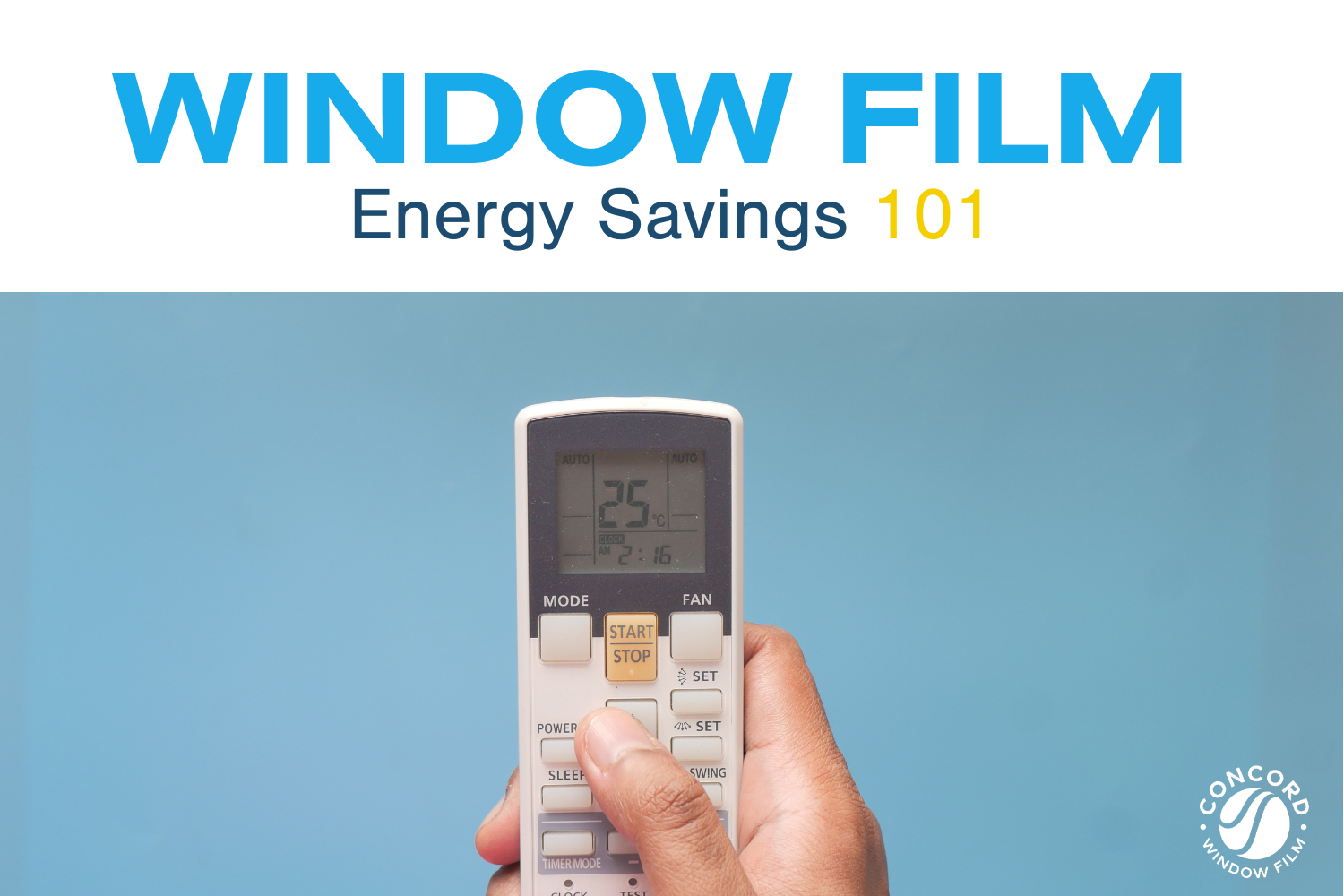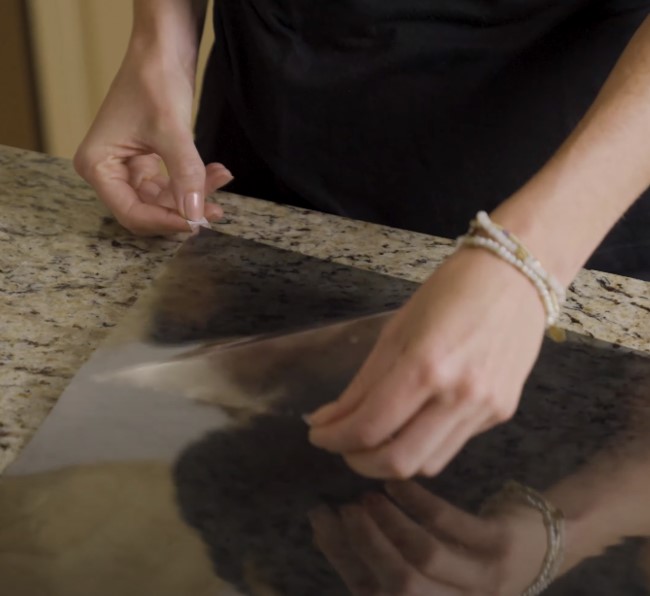
FREE SHIPPING ON PRECUT KIT ORDERS OF $100 OR MORE

When it comes to choosing window film for your home, it’s crucial to understand the different types that are on the market. Knowing the characteristics of the window film you are considering will help you make the best choice for your DIY project. The one factor we’ll look at in depth in this post is the type of window film adhesive used.
Different adhesive options offer varying levels of ease, durability, and flexibility. In this article, we will explore three common types of residential window film adhesive or ways the film sticks to the window: static cling, pressure sensitive, and dry adhesive. By understanding the pros and cons of each, you will be able to make the best selection for your home’s needs.
Static cling is a type of window film that doesn’t have an adhesive, but it also doesn’t have anything to do with static electricity. So “static cling” window film is something of a misnomer.
Static cling film works because the thin vinyl film has a similar cohesive force to glass. According to Tektra, an adhesive and film manufacturer, “[this] window film works due to the highly plasticized thin vinyl. When pressed onto a surface, it reacts like a mini suction cup to ‘like surfaces’, or items with similar cohesive force.”
So it is the cohesive forces between the film and the glass that result in a bond that holds the film in place. This molecular adhesion allows the film to “cling” to the glass surface.
It’s important to note that the adhesion achieved with static cling films is not as strong or permanent as that of adhesive-based films. The bond relies on the intermolecular forces between the film and the glass, and it can weaken over time due to factors such as temperature changes, moisture, or physical contact. As a result, static cling films are considered temporary solutions that can be easily removed and repositioned without leaving residue on the glass surface.
Here are all the pros and cons of static cling window films:
The main reason people consider static cling film over permanent film is that it is temporary. Static cling film is simple to install and remove, making it a popular choice for temporary applications or renters.
Since it does not use any adhesive, static cling film leaves no sticky residue when removed.
Static cling film can be repositioned and reused multiple times without losing its adhesive properties provided it is in good condition and is stored correctly.
Because of how static cling film is made and what it is made out of, it does not provide the same heat-blocking properties of a standard permanent window film. What’s more, because static control films tend to absorb rather than reflect solar energy, they may not be suited for double-pane windows. Be sure to check the product performance specifications prior to purchasing.
Static cling adhesion is susceptible to failure in the short term. So you can expect the film to start peeling off over time, especially in areas with high humidity, cold temperatures or places with temperature fluctuations.
Static cling film may not withstand regular cleaning or handling very well.
Concord Window Film does not sell any static cling films. We specialize in permanent, professional-grade solar control and privacy films.
Now let’s turn from temporary adhesion to permanent adhesives. There are two permanent adhesive types used with window film: pressure-sensitive adhesives and dry adhesives.
Pressure sensitive adhesive, also known as PSA, is a popular choice for decorative window film installations and is the less expensive of the two permanent adhesives. The main difference between PSA and dry is that pressure-sensitive adhesive is like tape – when you remove the film’s liner, the back of the film will be sticky to the touch. In addition, the film can stick to itself or other things, so it requires careful handling. It’s called pressure-sensitive adhesive because it requires some pressure to fully adhere the film to the glass.
Let’s examine its pros and cons:
PSA creates a reliable and long-lasting bond with the glass surface, ensuring that the film stays in place for an extended period.
Of the two permanent adhesives, pressure-sensitive adhesives generally cost less than dry.
Because the film is sticky to the touch once the liner is removed, users need to use caution when handling it. The film will stick to itself and other objects – as well as attract dirt and dust from the air – which could render the film unusable.
You only need to look at the reviews of pressure-sensitive films being sold on online marketplaces or big box stores to see customers’ frustration with the installation process.
While pressure-sensitive films can be repositioned during installation, they are not reusable once they have been installed. The film is meant to be permanently installed on windows and last 15+ years.
Once applied, PSA is harder to reposition, so a bit more care should be taken during installation to avoid misalignment.
Concord Window Film, we offer several lower cost films that use a pressure sensitive adhesive: Matte White Privacy film, Silver 15 Reflective film, and our 2MIL Clear UV film. The installation process is the same as with our ComforTech Ceramic Series film, you just need to be aware that once the liner is removed, the film will be sticky and can adhere to itself or something it shouldn’t. Be sure to apply plenty of mounting solution to the adhesive side of the film as you are removing the liner.
Pressure sensitive adehesives are also used for thicker safety films. This is the preferred adhesive for these films because of their weight. Extra tackiness is needed to ensure these films stay on the window and don’t slide down due to their weight before the film has had a chance to cure.
You can read more about pressure sensitive adhesive films here.
The second permanent adhesive available on window films is a dry adhesive. Dry adhesive, also known as adhesive-free or adhesive activated by water, is a versatile and effective choice for residential window film applications.
Window film with a dry adhesive is much easier to handle and work with than a PSA adhesive. Once you remove the liner, the window film will not be sticky to the touch – or stick to itself or other objects. The dry adhesive needs to be activated with water to bond with the glass.
Let’s delve into its pros and cons:
Dry adhesive forms the strongest and longest-lasting bond with the glass surface, ensuring the film remains firmly in place.
Because it is so easy to handle, it can be installed by homeowners without the need for professional assistance, saving both time and money.
Dry adhesive allows for adjustments and repositioning, facilitating a precise fit and minimizing errors.
While dry adhesive films can be repositioned during installation, they are not reusable once they have been installed. The film is meant to be permanently installed on windows and last 15+ years.
Compared to pressure-sensitive adhesives, dry adhesive films may require a slightly longer curing process.
Our most popular and best-selling window film: ComforTech Ceramic Series has a dry adhesive. This is the only film we sell (and the one we sell by far the most of) that has a dry adhesive backing. Using a dry adhesive is a sign of a high quality, professional-grade film, as dry adhesive film’s are the pro’s choice for residential and commerical tint applicaiton.
After considering the pros and cons of different window film adhesive types, dry adhesive emerges as the optimal choice for DIY residential applications.
Its superior adhesion, ease of installation, and repositioning flexibility outweigh any potential drawbacks. Dry adhesive allows for a secure and long-lasting bond without the need for professional assistance, making it an ideal option for homeowners seeking to enhance their windows’ energy efficiency, privacy, and aesthetics.
When it comes to choosing a window film adhesive, dry adhesive offers the perfect balance of durability, ease of use, and cost-effectiveness, ensuring a successful and hassle-free window film installation experience. You can read more about window film dry adhesives here.
Once again, all of our ComforTech Ceramic Series films have a dry adhesive making it easy for DIYers to install themselves.
Learn more about our ComforTech Ceramic Series films at https://windowfilm.com/shop/comfortech-ceramic-series-window-film/.